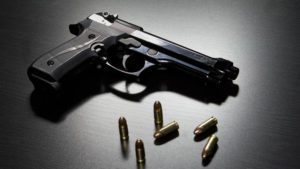 Justice Thomas continued in relevant part: To be clear, even if a modern-day regulation is not a dead ringer for historical precursors, it still may be analogous enough to pass constitutional muster. For example, courts can use analogies to “longstanding” “laws forbidding the carrying of firearms in sensitive places such as schools and government buildings” to determine whether modern regulations are constitutionally permissible. Id., at 626. That said, respondents’ attempt to characterize New York’s proper-cause requirement as a “sensitive-place” law lacks merit because there is no historical basis for New York to effectively declare the island of Manhattan a “sensitive place” simply because it is crowded and protected generally by the New York City Police Department.
Justice Thomas continued in relevant part: To be clear, even if a modern-day regulation is not a dead ringer for historical precursors, it still may be analogous enough to pass constitutional muster. For example, courts can use analogies to “longstanding” “laws forbidding the carrying of firearms in sensitive places such as schools and government buildings” to determine whether modern regulations are constitutionally permissible. Id., at 626. That said, respondents’ attempt to characterize New York’s proper-cause requirement as a “sensitive-place” law lacks merit because there is no historical basis for New York to effectively declare the island of Manhattan a “sensitive place” simply because it is crowded and protected generally by the New York City Police Department.
Having made the constitutional standard endorsed in Heller more explicit, the Court applies that standard to New York’s proper cause requirement. It is undisputed that petitioners Koch and Nash—two ordinary, law-abiding, adult citizens—are part of “the people” whom the Second Amendment protects. See Heller, 554 U. S., at 580. And no party disputes that handguns are weapons “in common use” today for self-defense. See id., at 627. The Court has little difficulty concluding also that the plain text of the Second Amendment protects Koch’s and Nash’s proposed course of conduct—carrying handguns publicly for self-defense. Nothing in the Second Amendment’s text draws a home/public distinction with respect to the right to keep and bear arms, and the definition of “bear” naturally encompasses public carry. Moreover, the Second Amendment guarantees an “individual right to possess and carry weapons in case of confrontation,” id., at 592, and confrontation can surely take place outside the home.
The burden then falls on respondents to show that New York’s proper-cause requirement is consistent with this Nation’s historical tradition of firearm regulation. To do so, respondents appeal to a variety of historical sources from the late 1200s to the early 1900s. But when it comes to interpreting the Constitution, not all history is created equal. “Constitutional rights are enshrined with the scope they were understood to have when the people adopted them.” Heller, 554 U. S., at 634–635. The Second Amendment was adopted in 1791; the Fourteenth in 1868. Historical evidence that long predates or postdates either time may not illuminate the scope of the right. With these principles in mind, the Court concludes that respondents have failed to meet their burden to identify an American tradition justifying New York’s proper-cause requirement.
A counter-argument to the interpretation of the term “bear” is that it means that people can do more than just “keep” firearms. Put another way, people can also use firearms and also carry them outside of where they “keep” them under certain circumstances. What circumstances are acceptable is not clear from the text of the Second Amendment.
